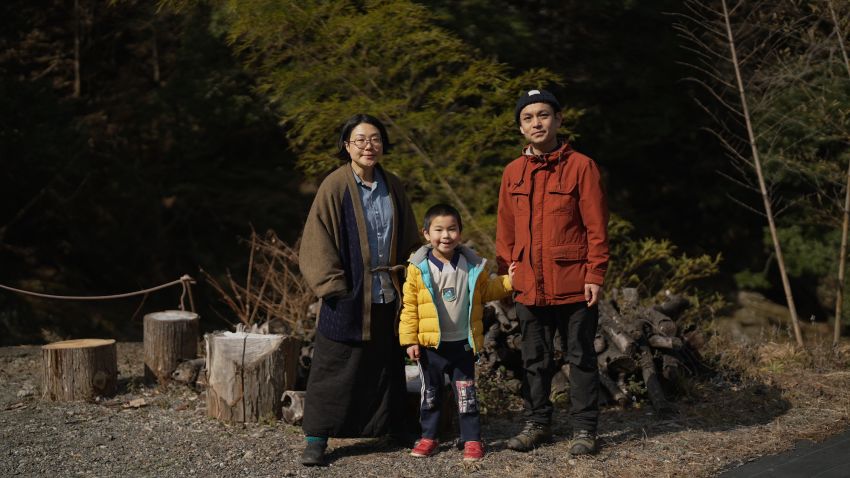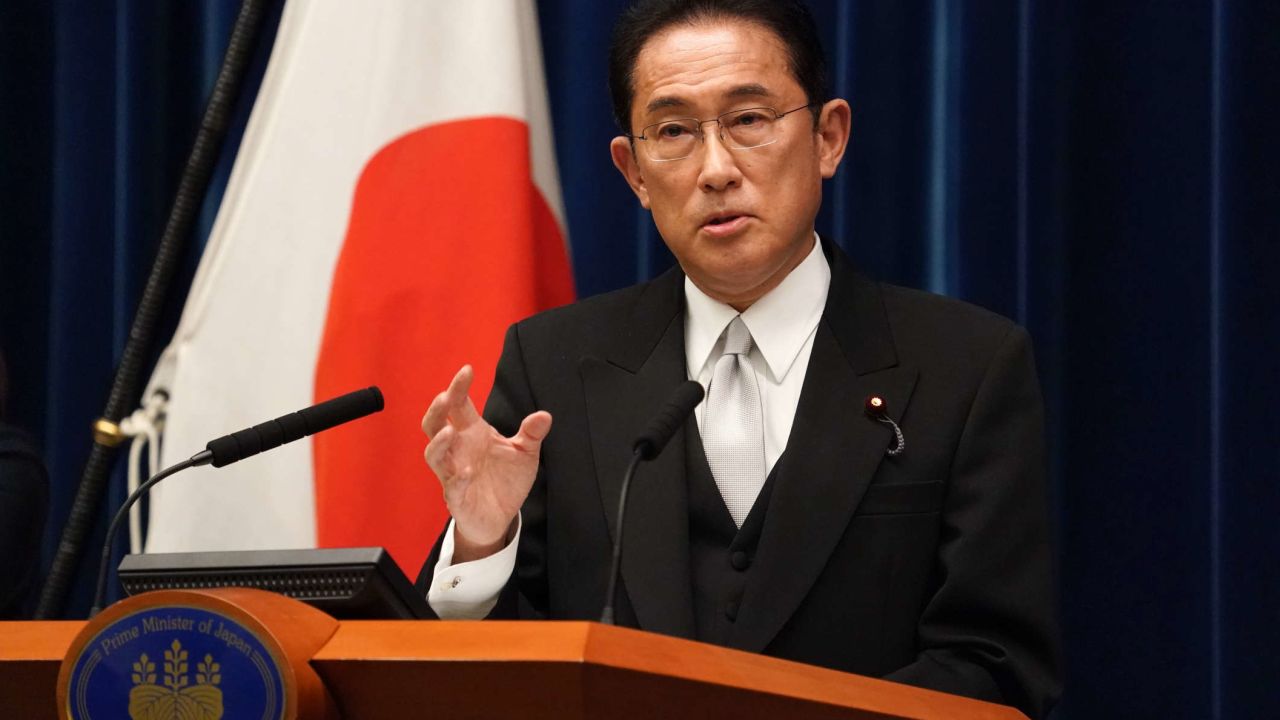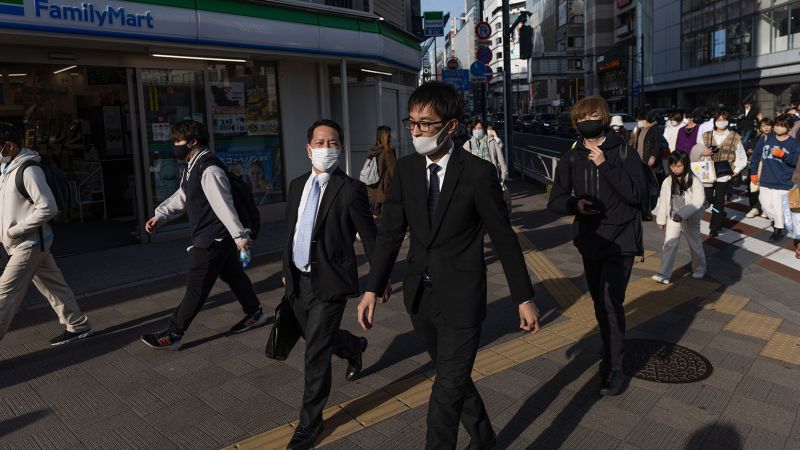Hong Kong
CNN
—
A child riding on his father’s shoulders smiles as they stroll through a park lined with yellow autumn-touched leaves – that is the typical image of a Japanese “ikumen”.
The term strings together the Japanese words ikuji, meaning care for children, and ikemen, referring to cool-looking men.
Japanese authorities have widely promoted the term in the past decade to combat the country’s notoriously long working hours that have not only deprived workaholic fathers of family time and stay-home mothers of careers, but have helped drive the birth rate to one of the lowest in the world.
To seize the “last chance to reverse” the situation, Prime Minister Fumio Kishida last week unveiled a raft of policies, including boosts to child support and a pledge to lift the number of male workers taking paternity leave from the current 14% to 50% by 2025, and 85% by 2030.
But some in the world’s third-largest economy – which has long struggled with a falling fertility rate and an aging population – are skeptical the plan can really move the needle.
Makoto Iwahashi, a member of POSSE, a labor union dedicated to younger workers, said while the government’s plan was well-intentioned, many Japanese men were simply too scared to take paternity leave due to potential repercussions from their employers.
Japanese men are entitled to four weeks of flexible paternity leave, on up to 80% of their salary, under a bill passed by the Japanese parliament in 2021.

Japan’s rural communities are dying out. The problem is, so are its cities
But despite the law, men remained “afraid” that taking the leave may have a negative effect on their promotion prospects or that they may be reassigned to a different position with fewer responsibilities, Iwahashi said.
While it is illegal to discriminate against workers who take maternity and paternity leave in Japan, Iwahashi said workers on fixed-term contracts were particularly vulnerable.
And anyway, “A little tweak on paternity leave won’t significantly change a declining birth rate,” he added.
Hisakazu Kato, an economics professor at Meiji University in Tokyo, said while big companies had become more accepting of parental leave over the years, smaller firms still had reservations.
“Small companies are afraid they will face (worker shortages) due to childcare leave, and this puts pressure on young fathers who want to take childcare leave in future,” he said.
At a press conference last week, the prime minister acknowledged the concerns and pledged to consider providing allowances for small and medium-sized enterprises, with details to be announced in June at his yearly policy blueprint.
He also unveiled a plan aimed at boosting the uptake of paternity leave by encouraging firms to disclose their performance.

In 2022, the number of new births in Japan dipped below 800,000 for the first time since records began in 1899, the latest milestone in a trend that the government sees as increasingly alarming.
Last week, Kishida went as far as to warn that “the next six to seven years will be the last chance to reverse the declining birthrate trend”.
But Stuart Gietel-Basten, a professor of public policy and social science at The Hong Kong University of Science and Technology, cautioned that a low birth rate was often a sign of entrenched cultural factors that would likely be resistant to policies changes. Such factors might range from work culture to gender attitudes, he added.
“Increasing paternity leave is a good policy, no doubt. It will certainly provide many men (and women) with a positive outcome. However, unless the prevailing cultural norms and attitudes change the impact at a macro level could be limited,” said the scholar.
Riki Khorana, 26, who plans to tie the knot with his girlfriend in June, said the high cost of living was one of his biggest concerns in starting a family.
Working as an engineer at one of Japan’s biggest conglomerates at the heart of Tokyo, the country’s capital, he identified himself as a relatively high earner, yet he said he currently lives with his parents in Yokohama, Japan’s second largest city south of Tokyo.
After getting married, he will move out of his parent’s house but will still have to stay in Yokohama due to Tokyo’s high rents.
Tokyo is the ninth most expensive city for expatriates to live in, according to US consulting firm Mercer’s Cost of Living Survey.
Khorana said he planned to have two children, but if there were more effective government policies then he would consider more.
“For me, I feel like I cannot afford more than two children,” he said. “There are less financially secure people who think they cannot have more than one child.”
The country’s fertility rate – the average number of children born to women during their reproductive years – has fallen to 1.3, far below the 2.1 required to maintain a stable population.
Over the years, experts have also pointed to a sense of prevailing pessimism among young people who, due to the pressures of work and economic stagnation, have little confidence in the future.

Last week, the prime minister said he planned market reforms that would push up wages and economic assistance for young workers. He also pledged to introduce benefits that could support freelance or self-employed workers and spoke of extra allowances for child support, education and housing.
The economics professor Kato felt the new policies were unlikely to be enough to solve the country’s demographic problems.
But he saw a silver lining in encouraging paternity leave.
“I think this is a good proposal as it not only improves family policies, but also gender equality,” he said.
(Except for the headline, this story has not been edited by PostX News and is published from a syndicated feed.)

